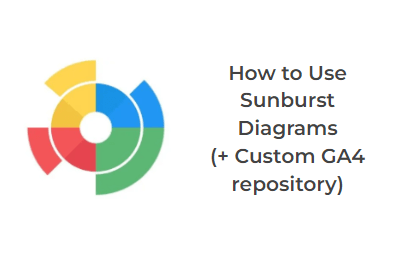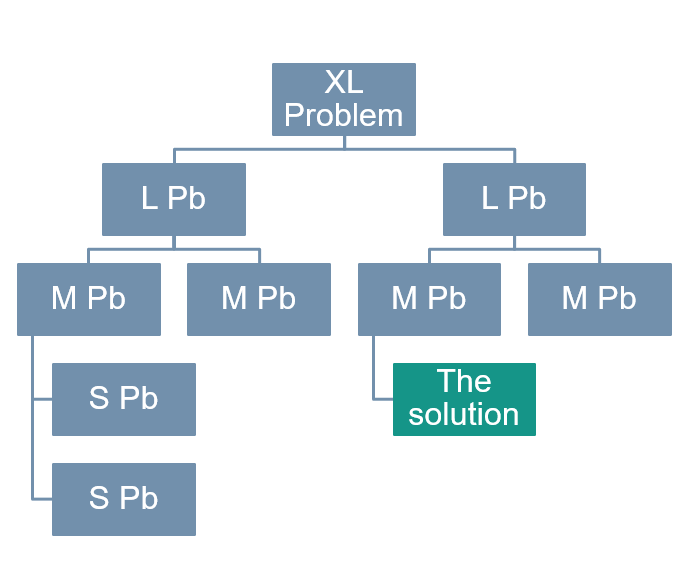
In web analytics, whether your KPIs (Key Performance Indicators) are up or down, all or part of the variation is not necessarily explained by a bad or good performance of your product or acquisition teams. It can simply be due to market variations that can fluctuate not only by seasonality but also by fads, crises or special events.
The story that emerges from the analysis is quite different when we take a step back and analyze not at the site level but at the site level in its market.
Let’s discover together how DataMa quantifies the trend and integrates it into the analysis.
Taking a step back in performance analysis
Study the problem
We often think that when the number of sessions goes down or up it is due to market trends, but we often tend to keep this thinking in a qualitative way. During the Covid crisis for example, which with the confinements greatly impacted many web markets, many analysts and eCommerce managers said: “It’s because of the Covid effect”. Weekly, monthly or year-on-year analyses were no longer really “usable”. This is a pity, because it is enough to take into account a market indicator to turn this qualitative context into a qualitative data, and to make the difference between market context and company performance.
So how can we analyze the variations of each of the indicators while having some insight on the evolution of the market in which you evolve?
Let’s try to quantify the effect of the market trend in order to interpret the variations of your performance indicators in a more relevant way.
Building a market share indicator
Depending on what you are tracking as an input metric in volume on your site, whether it is the number of sessions or users when you are analyzing your conversion tunnel or the cost of your campaigns when you are studying acquisition issues, it is possible to create an indicator that will be the ratio between this input metric and the value of the market trend that depends on your source:

Build the market equation
As is often the case at DataMa, we will use the “market equation” approach. This is an analytical approach that allows you to mathematically link indicators together. In our example, it is written as follows:

DataMa will then take into account the impact of the market trend and look at the variations of the other indicators accordingly.
Built the source data
The market index can be generated in a more or less precise way depending on the sources you have available.
There are paid sources, extremely efficient (DataMa is partnered with FoxIntelligence or Nielsen for example but we can also mention Similar Web, SEM Rush etc.), but also free sources sometimes largely sufficient for general needs, like Google trends for example.
To build your market share index, you will have to extract the data from this source by date and combine it with your analytical data from Google Analytics for example.
For example, let’s take the case of a travel sales site that wants to analyze its sales performance between March and April 2020 during the first containment:
On the Google Trends side, we retrieve data for the word “travel” in France. This is a good proxy for the market index:’indice de marché peut être généré de manière plus ou moins précises selon les sources que vous avez à disposition.

On the Google analytics side, we select the useful dimensions and metrics: in our example we will follow the conversion tunnel of our travel agency’s website, which breaks down in a very simple way into sessions, reservations and then transactions that materialize as revenue.
Via DataMa Prep we can automate the process, using the Google Trends and Analytics connectors and the “append” function. It can then be updated automatically on a regular basis.
We then obtain the following flow, where the Google Analytics data is “pasted” under the Google Trends data:

View source
Analyze the performance gap
By modeling the source in the Datama Compare module by connecting it as a “Waterfall”, let’s look at what insights we can draw from it to explain the change in revenue between March and April:

1. The first thing that stands out is the fall in the market index of -44.1%, which is a direct representation of the impact of containment in France on the market trend.
2. The second is that our conversion tunnel, although down, is not doing so bad compared to the market trend with a drop of only -23%, which is a 21% compensation due to a better performance of the session acquisition stages compared to the market trend and a higher average basket.
Without taking into account the market trend, where we could have seen an acquisition problem with a loss of -32.7%, as shown on the waterfall below which excludes the effect of market trends.
While in reality acquisition has performed well when market variations are taken into account with an increase of +20.4% compared to the previous month…
3. Finally, we analyze that the loss of traffic linked to the market drop is partially compensated by a 15.9% increase of the average basket. After a “Zoom in” on this stage of the average basket (breaking down a stage by all the segments of the most relevant dimension), we observe that this is explained by a better performance of the SEA campaigns 36% higher than the average and of the e-mail campaigns with performances 66% higher than the average.

Conclusion
With DataMa, we have thus in a few minutes made a complex analysis, which allows us to quantify precisely the origin of a revenue evolution on our website between two periods, and to make the difference between what is of the order of the internal performance of our organization (in acquisition, in conversion or in pricing) and what is rather imposed by the market trend.
- Did you like this analysis?
- Do the same at home ?!
- Create an account on our solution
- Adapt and upload the dataset used in this article










